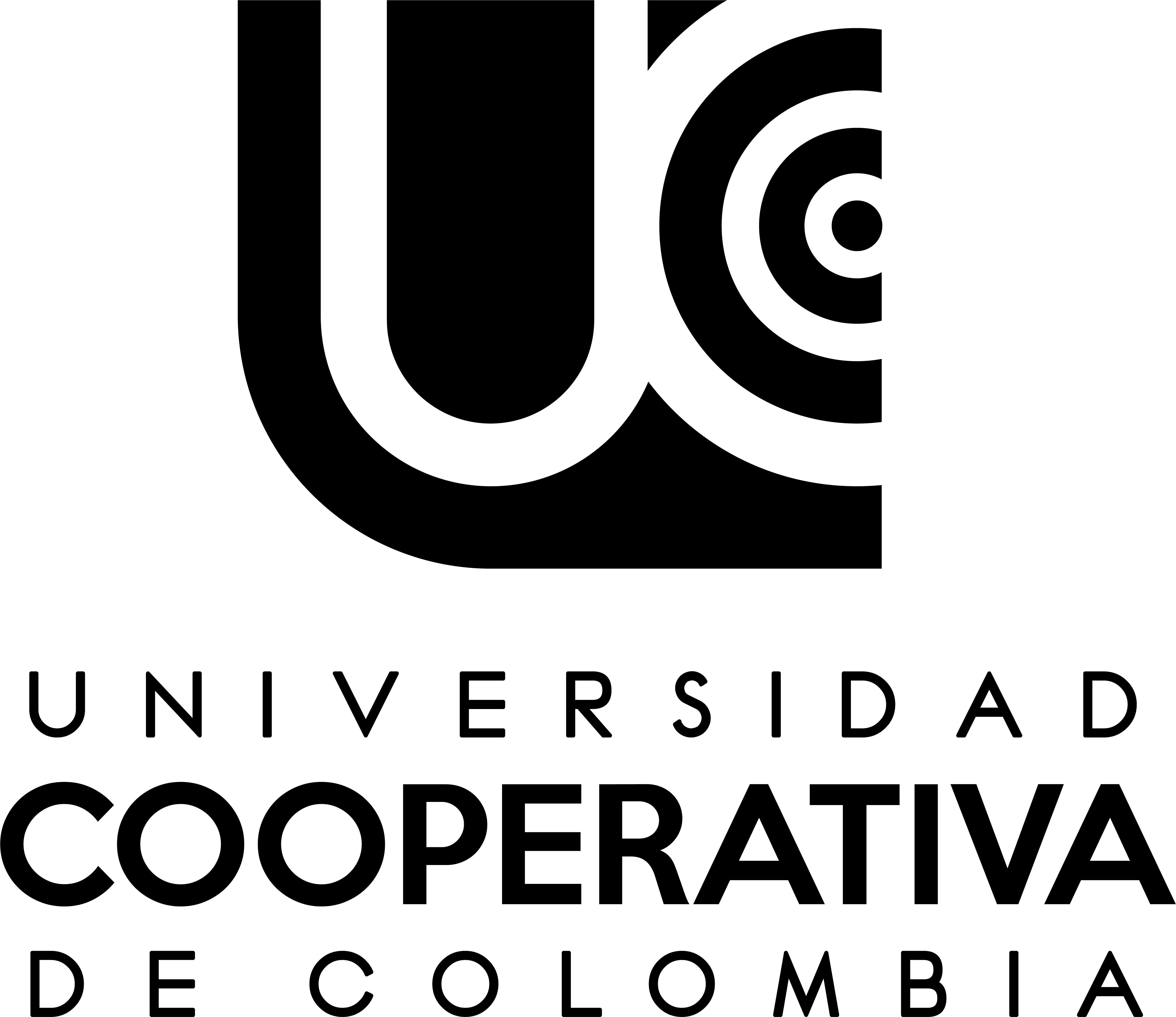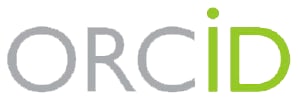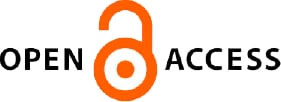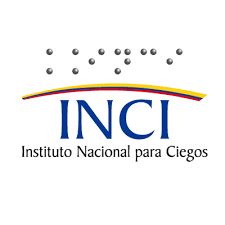Dental abnormalities of patients with cleft lip and palate : a literature review
Fundación Universitaria Autónoma de las Américas
email: melissa.sanchez@uam.edu.co
Fundación Universitaria Autónoma de las Américas
email: melissa.sanchez@uam.edu.co
Introduction: The cleft lip or palate is the most prevalent facial skull malformation. Its etiology is multifactorial and produces different dental abnormalities, of which the most frequent are: number, form, position, size, structure and increase the probability of developing dental cavities. These cause patients to suffer swallowing, speech and phonation problems. Therefore, a multidisciplinary approach is required to treat their variable aesthetic, functional, anatomical and psychological implications.
Materials and methods: A descriptive literature review was carried out using original articles, meta-analysis and bibliographic reviews, published between 2012 and 2018, that addressed dental abnormalities of patients with nonsyndromic CL/P, excluding case reports, undergraduate and postgraduate theses.
Results: Among the most frequent dental abnormalities were: shape abnormalities (conical tooth and dental fusion), number alterations (dental agenesis, supernumerary teeth), position abnormalities (mesialization, distalization, rotation and translation), size abnormalities (microdontia and macrodontia), structure abnormalities (amylogenesis imperfecta) and a high prevalence of dental cavities.
Díaz GH, Díaz GJ. Defectos de cierre orofaciales: paladar hendido y labio leporino. Una revisión bibliográfica. Medicina de familia SEMERGEN. 2013;39(5):267:271. DOI: https://doi.org/10.1016/j.semerg.2012.08.003
Lombardo E. La intervención del pediatra en el niño con labio y paladar hendido. Acta Pediatr Mex. 2017;38(4):267-273. Disponible en: https://ojs.actapediatrica.org.mx/index.php/APM/article/view/1435/966
Pons A, Pons L, Hidalgo S, Sosa C. Estudio clínico-epidemiológico en niños con labio paladar hendido en un hospital de segundo nivel. Boletín Médico del Hospital Infantil de México. 2016;74(2):107-121. DOI:
https://doi.org/10.1016/j.bmhimx.2016.11.008
Martínez L, Imbert F, Simons S, Herrera Y, Nápoles Y. Combinación de la técnica funcional con Ortodoncia en el tratamiento de pacientes fisurados labio-palatinos. Revista información científica. 2018;97(2):408-420. Disponible en : https://dialnet.unirioja.es/servlet/articulo?codigo=6751161&fbclid=IwAR22Gs7TMrkDsZ0iO7wmAMV0cMY7fHjnieOxhj0-owh7dcNSmUxlP3W5lck
Mejía A, Suárez D. Factores de riesgo materno predominantes asociados con labio leporino y paladar hendido en los recién nacidos. Investigación Materno Infantil. 2012;4(2):55-62. Disponible en: https://www.medigraphic.com/pdfs/imi/imi-2012/imi122a.pdf
Ventiades F. Importancia de abordaje multidisciplinaria en el tratamiento del labio y paladar hendido. Arch Boliv Med. 2014;22(90):125-132. Disponible en: https://www.revistasbolivianas.org.bo/pdf/abm/v22n90/v22n90a08.pdf
Carvajal J, Carvajal P, Carvajal C, Henners H, Romero M. Prevalencia de labio fisurado y paladar hendido en niños de edad preescolar del municipio de Zudáñez. Ciencias de la Salud. 2014;(1):203-220. Disponible en: https://dialnet.unirioja.es/servlet/articulo?codigo=4866532
Bedón M, Villota L. Labio y paladar hendido: tendencias actuales en el manejo exitoso. Archivos de Medicina (Col). 2012; 12(1):107-119. Disponible en: https://www.redalyc.org/articulo.oa?id=273824148010
Zamora C. Prevalencia de malformaciones congénitas asociadas en una población de niños con fisuras del labio y del paladar en Manzanillo, Cuba. Rev Soc Bol Ped. 2013;52(1):3-7. Disponible en: https://boliviarevista.com/index.php/pediatria/article/viewFile/2908/2906
Ortega JG, Yezioro S, Benavides BC, Báez LC. Efectos teratogénicos de insecticidas organofosforados en la etiología de labio y paladar hendido: revisión de literatura. Rev Nac Odontol. 2017;13(24):101-110. DOI: https://dx.doi.org/10.16925/od.v12i24.1658
Sabbagh H, Hassan M, Innes N, Elkodary H, Little J, Mossey P. Passive smoking in the etiology of non-syndromicorofacial clefts: a systematic review and meta-analysis. PLOS UNO. 2015;10(3). DOI: https://doi.org/10.1371/journal.pone.0116963
Colombia. Ministerio de Salud y Protección Social [Internet]. Estudio Nacional De Salud Bucal - ENSAB IV. Bogotá, Colombia: MinSalud; 2014. Disponible en: https://www.minsalud.gov.co/sites/rid/Lists/BibliotecaDigital/RIDE/VS/PP/ENSAB-IV-Situacion-Bucal-Actual.pdf
Acosta M, Percastegi D, Flores B. Frecuencia y factores de riesgo en labio y paladar hendidos del Centro Médico Nacional La Raza. Rev. Mex de Cirugía Bucal y Maxilofacial. 2013;9(3):109-112. Disponible en: https://www.medigraphic.com/pdfs/cirugiabucal/cb-2013/cb133f.pdf
Pawluk M, Campaña H, Gili J, Comas B, Giménez L, Villalba M, et al. Determinantes sociales adversos y riesgo para anomalías congénitas seleccionadas. Arch Argent Pediatr. 2014;112(3):215-223. DOI: https://dx.doi.org/10.5546/aap.2014.215
Salas M, Barrios Z, Simancas Y, Ablan L, Ramírez P, Prato R. Anomalías dentarias en niños con fisura labio palatina. Revista Odontológica de los Andes. 2015;10(2):4-9. Disponible en: http://erevistas.saber.ula.ve/index.php/odontoula/article/view/6914
Acosta M, Percastegi D, Flores B. Frecuencia y factores de riesgo en labio y paladar hendidos del Centro Médico Nacional «La Raza». Rev Mex de Cirugía Bucal y Maxilofacial. 2013;9(3):109-112. [Internet]. [Consultado 2017 Julio 15] http://www.medigraphic.com/pdfs/cirugiabucal/cb-2013/cb133f.pdf
Rengifo H. Caracterización dental de niños colombianos con hendiduras labio palatinas no sindrómicas. Revista Odontológica Mexicana. 2016;20(3):179-176. DOI: https://doi.org/10.1016/j.rodmex.2016.08.005
Charry I, Aguirre M, Castaño J, Gómez B, Higuera J, Mateus G, et al. Caracterización de los pacientes con labio y paladar hendido y de la atención brindada en el Hospital Infantil Universitario de Manizales (Colombia). Archivos de Medicina (Col); 2012;12(2):190-197. Disponible en: https://www.redalyc.org/articulo.oa?id=273825390005
Ovallos C & Cespedes J. Particularidades anatómicas de la cavidad oral en usuarios con características específicas. Revista Científica Signos Fónicos. 2015; 1(3):101-113. DOI: https://doi.org/10.24054/01204211.v3.n3.2015.1568
Abello P, Araujo Y, Caycedo D, Pachajoa H. Necesidad de guías clínicas para el manejo integral de pacientes con labio paladar hendido. Revista de salud pública. 2016;18(1):82-94. DOI: https://dx.doi.org/10.15446/rsap.v18n1.41884
Gutiérrez I, Valenzuela O. Alteraciones de Número en Dentición de Pacientes entre 2 y 12 años de edad con Ddisrafias Labio alvéolo palatina atendidos en la Unidad de Odontopediatría del Hospital Regional Antofagasta, Chile. Int J Odontostomat. 2014;8(3):481-490. DOI: http://dx.doi.org/10.4067/S0718-381X2014000300025
Salas J, Lobo C, Ciccale A, Zayda C, Barrios G, Salas P. Alteraciones en el desarrollo y crecimiento bucodental de pacientes con hendidura labio palatina. Rev. Odontológica de los Andes. 2017;12(1):12-21. Disponible en: https://erevistas.saber.ula.ve/index.php/odontoula/article/view/8237
Vigueras O, Fernández MA, Villanueva MC. Prevalencia de dientes supernumerarios en niños con labio y/o paladar fisurado. Rev Odont Mex. 2015;19:81-88. DOI: https://doi.org/10.1016/j.rodmex.2015.05.003
González M, Gaona A, Gamboa L, Martignon S. Epidemiología de caries dental (ICDAS) en individuos colombianos con labio y paladar hendido. Universitas Odontológica. 2013; 32(68):125-132. Disponible en: https://revistas.javeriana.edu.co/index.php/revUnivOdontologica/article/view/SICI%3A%202027-3444%28201301%2932%3A68%3C125%3AECDLPH%3E2.0.CO%3B2-D
Torres E, Gómez G, Pinzón Z. Asociación entre el consumo del cigarrillo y alcohol en la gestante como factor de riesgo para paladar hendido no sindrómico. Revista UstaSalud. 2012;11:88-94. Disponible en: file:///C:/Users/usuario/Downloads/1121-2466-1-SM%20(2).pdf
Haque S, Khursheed M. Common Dental Anomalies in Cleft Lip and Palate Patients. Malays J Med Sci. 2015;22(2):55-60. Disponible en: https://www.ncbi.nlm.nih.gov/pmc/articles/PMC4438093/
Pagelow M, Algadi N, Karsten AL. The prevalence of various dental characteristics in the primary and mixed dentition in patients born with non-syndromic unilateral cleft lip with or without cleft palate. Eur J Othod. 2012;34(5):561-70. DOI: 10.1093/ejo/cjr074
Suzuki A, Nakano M, Yoshizaki K, Yasunaga A, Haruyama N, Takahashi I. A Longitudinal Study of the Presence of Dental Anomalies in the Primary and Permanent Dentitions of Cleft Lip and/or Palate Patients. Rev Cleft Palate Craniofac J. 2017;54(3):309-320. DOI: 10.1597/15-186
Bartzela T, Carels C, Bronkhorst E, Kuijpers A. Tooth agenesis patterns in unilateral cleft lip and palate in humans. Archives of Oral Biology. 2013;58(6):596-602. DOI:https://doi.org/10.1016/j.archoralbio.2012.12.007
Eslami N, Majidi MR, Aliakbarain M, Hasanzadeh N. Prevalence of dental anomalies in patients with cleft and lip palate. J Carniofac Surg. 2013;24(5):1695- 8. DOI: https://doi.org/10.1097/SCS.0b013e3182801bc8
Antonarakis G, Fisher D. Permanent tooth agenesis and maxillary hipoplasia in the patients with unilateral cleft lip and palate. Plast Reconstr Surg. 2015;136(5):648-56. DOI: https://doi.org/10.1097/PRS.000000000000169
Carvajal J, Carvajal C, Carvajal P, Henners H, Romero M. Caracterización dental de niños colombianos con hendiduras labio palatinas no sindrómicas. Rev Odont Mex. 2016;20(3):179-186. Disponible en: https://www.medigraphic.com/cgi-bin/new/resumen.cgi?IDARTICULO=66272
Hurtado A, Rojas L, Sanchez D, García A, Ortíz M, Aguirre A. Prevalencia de caries y alteraciones dentarias en niños con labio fisurado y paladar hendido de una fundación de Santiago de Cali. Revista Estomatología. 2016;16(1):13-17. Disponible en: https://estomatologia.univalle.edu.co/index.php/estomatol/article/view/271/270
Navas M. Prevalencia de dientes supernumerarios en pacientes con labio y paladar hendido mediante el análisis de ortopantomografías. Revista Española de Cirugía Oral y Maxilofacial. 2017;39(3):171-178. DOI: https://doi.org/10.1016/j.maxilo.2016.03.004
Giusti J, Panchana G, García, T, Zurita G. Caries dental y maloclusiones en infantes con labio y/o paladar hendido. Polo del Conocimiento. 2018;3(9):15-23. DOI: https://doi.org/10.23857/casedelpo.2018.3.9.septiembre.15-23
Paranaiba L, Coletta R, Swerts M, Quintino R, De Barros L, Martelli H. Prevalence of Dental Anomalies in Patients with Nonsyndromic Cleft Lip and/or Palate in a Brazilian Population. The Cleft Palate-Craniofacial Journal. 2013;50(4):400-405. DOI: https://doi.org/10.1597/11-029
Smallridge J, Wills A, Mahmoud O, Chong A, Clark V. Centre- level variation in dental treatment and oral health and individual- and area- level predictors of oral health in 5- year- old children with non- syndromic unilateral cleft lip and palate: the Cleft Care UK study. Part 3. Orthod Craniofac Res. 2017;20(Suppl. 2):19-26. DOI: https://doi.org/10.1111/ocr.12185
Antonarakis G, Palaska P, Herzog G. Caries Prevalence in Non-Syndromic Patients with Cleft Lip and/or Palate: A Meta-Analysis. Caries Res. 2013;47:406-413. DOI: https://doi.org/10.1159/000349911
Ruiz L, Maya R, Perlatt D’alpino P, Atta M, Da Rocha N. Prevalence of Enamel Defects in Permanent Teeth of Patients with Complete Cleft Lip and Palate. The Cleft Palate-Craniofacial Journal. 2013;50(4):394-399. DOI: https://doi.org/10.1597/11-200
Jamile S, Luana A, Laís G, Samário M, Gabriela L, Alena M, Ricardo C, Silvia R. Dental anomalies inside the cleft region in individuals with nonsyndromic cleft lip with or without cleft palate. Med Oral Patol Oral Cir Bucal. 2016;21(1):e48–e52. DOI: https://doi.org/10.1111/ocr.12185
Barrero D, Pinto MA, Flórez LT. Presencia de caries dental en pacientes con labio y paladar hendido: una revisión sistemática. Revista UstaSalud. 2016; 15:27-35. DOI: https://doi.org/10.15332/us.v15i0.2078
Tannure PN, Oliveira CA, Maia LC, Viera AR, Granjeiro JM. Prevalence of dental anomalies in nonsyndromic individuals with cleft lip and palate: a systematic review and meta-analysis. Clefy Palate Craniofac J. 2012;49(2):194-200. DOI: https://doi.org/10.1597/10-043
Nicholls W. Dental anomalies in children with cleft lip and palate in Western Australia. Eur J Dent. 2016;10(2):254–258. DOI: https://doi.org/10.4103/1305-7456.178317
Barrios G, Salas Z, Pereira M, Bortone C, Ramírez L. Prevalencia, experiencia y necesidades de tratamiento de caries de la infancia temprana en niños con labio y paladar hendido. Rev Odontol. 2014;9(2):23-31. Disponible en: https://erevistas.saber.ula.ve/index.php/odontoula/article/viewFile/6998/6861
Cisneros G, Castellanos B, Romero L, Cisneros CM. Caracterización clinicoepidemiológica de pacientes con malformaciones labiopalatinas. MEDISAN. 2013;17(7):1039-1046. Disponible en: https://scielo.sld.cu/scielo.php?script=sci_arttext&pid=S1029-30192013000700002&lng=es
Hernández M, Guerra M. Características postquirúrgicas dento-buco-maxilo-faciales de niños con hendidura de labio y paladar. Acta Odontológica Venezolana. 2014;52(2):1-3. Disponible en: https://www.actaodontologica.com/ediciones/2014/2/art-3/
Restrepo L, Córdoba W, González M, Ruiz J, Mora I, Parada C, et al.. Acción de tutela y barreras de acceso a servicios de salud en labio y/o paladar hendido. Rev. Colomb. Enferm. 2016;12(1):15-24. Disponible en: https://dialnet.unirioja.es/descarga/articulo/6547186.pdf
Hoyos C, Labio y paladar hendidos: Orientaciones para su diagnóstico y manejo. Rev Med Risaralda. 2013;7(1):32-36. Disponible en: file:///C:/Users/usuario/Downloads/8231-7935-1-PB%20(3).pdf
Calderón N, Arismendi A, Pereira M; Espinoza N, Zaida Barrios. Video de cuidados orales para niños con Hendidura Labiopalatina. Revista Latinoamericana de Ortodoncia y Odontopediatría. 2014;12(1):10-14. Disponible en: https://www.ortodoncia.ws/publicaciones/2014/art-23/
Fuentes J, Silva Mó, Cantín M, Llermaly S. Acercamiento de los Procesos Alveolares Mediante Ortopedia Prequirúrgica en Pacientes con Labio y Paladar Fisurado. Int J Odontostomat. 2014;8(1):119-124. DOI: https://dx.doi.org/10.4067/S0718-381X2014000100016
Copyright (c) 2020 Revista Nacional de Odontología

This work is licensed under a Creative Commons Attribution 4.0 International License.
Every single author of the articles has to declare that is an original unpublished work exclusively created by them, that it has not been submitted for simultaneous evaluation by another publication and that there is no impediment of any kind for concession of the rights provided for in the contract.
In this sense, the authors committed to await the result of the evaluation by the journal Revista Nacional de Odontologia before considering its submission to another medium; in case the response by that publication is positive, additionally, the authors committed to respond for any action involving claims, plagiarism or any other kind of claim that could be made by third parties.
At the same time, the authors have to declare that they are completely in agreement with the conditions presented in their work and that they cede all patrimonial rights. These rights involve reproduction, public communication, distribution, dissemination, transformation, making it available and all forms of exploitation of the work using any medium or procedure, during the term of the legal protection of the work and in every country in the world, to the Universidad Cooperativa de Colombia Press.









